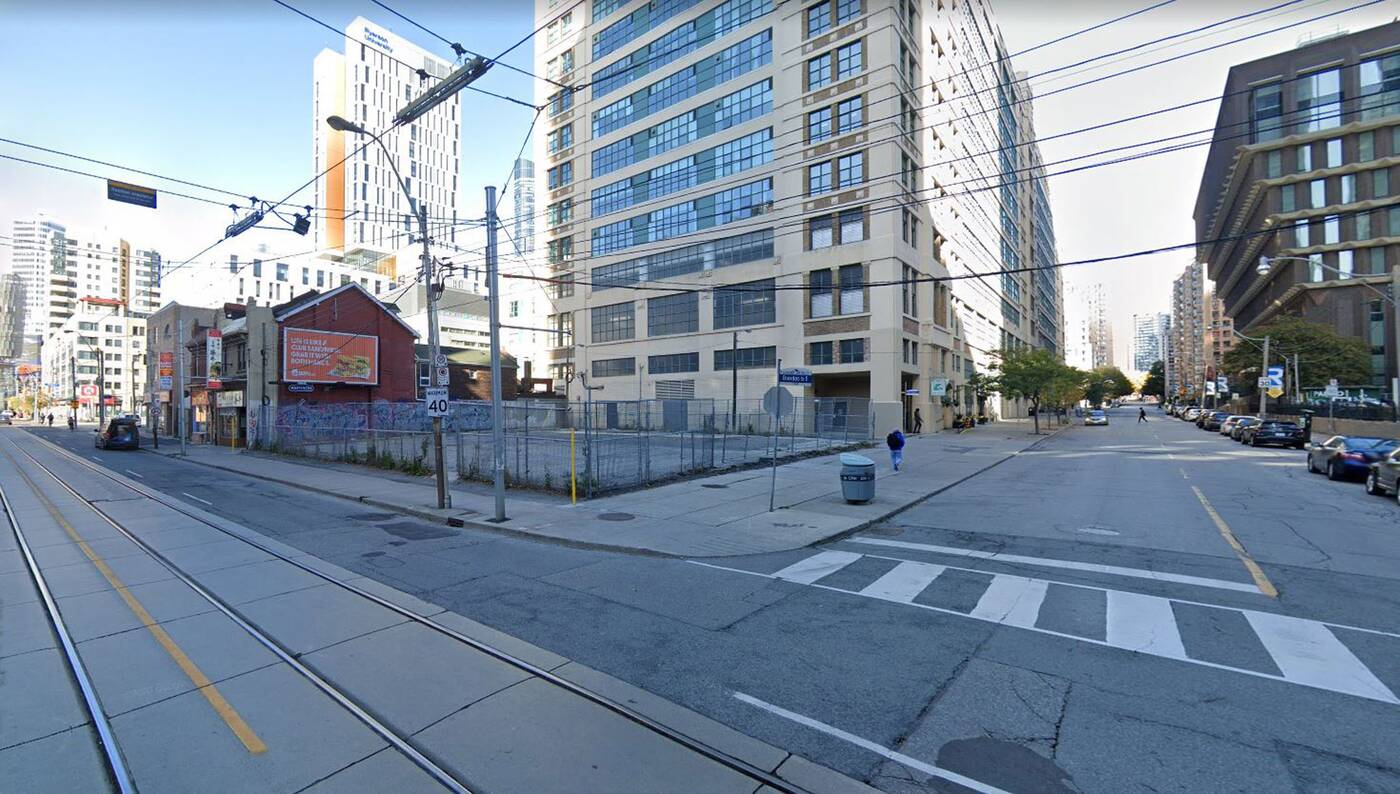Ryerson University wants to build the first 100 per cent, digitally-enabled building in the world, only to tear it down in the years to come.
Detailed back in March in a funding announcement, the Ryerson University Smart Campus Integration and Testing Hub (SCIT Hub) would “enable the exploration and testing of ‘smart building’ products and management strategies” that could help in offsetting climate change.
A new application submitted with the city is offering up new details of the SCIT Hub, part of a complex Ryerson is planning at 136 Dundas Street East, on the northwest corner of Dundas and Mutual Street. The site has been mostly vacant for years, currently home to a temporary research trailer and a concrete pad used for an earlier Ryerson research project.

Looking northwest across Dudas Street East towards the site of the proposed temporary buildings. Photo via Google Street View.
The trailer would stay and be joined by two new temporary buildings: A two-storey mass timber structure would wrap around the southeast corner of the site in an L-shape, to be used for the SCIT Hub, and a separate three-storey research building would rise to the west.
Designed by WZMH Architects, the SCIT Hub will include a laboratory — including a smart home mock-up, workshops, and test areas — looking at forward-thinking technologies, with studies led by Ryerson architectural science professor Jenn McArthur.
“It’s designed to be the world’s first 100 per cent digitally enabled building,” said McArthur back in March. “This facility is designed to serve as a model for what sustainable construction can look like beyond 2030.”
“We’re aiming for net-zero carbon over the life cycle of the building and to really use it as an opportunity to showcase the state-of-the-art technologies that we need to mitigate climate change,” continued McArthur.
Some pretty impressive technology would be used to accomplish this ambitious goal, including experimental systems like “intelligent structural panels” that function like plug-and-play smart tablets you can walk on, and plenty more sci-fi-feeling features.
And despite all the high-tech planned for the SCIT Hub, it and the planned research building to the west would not be long-term additions to the city, their small size and limited functionality hard to justify on such prime land.
Designed to be temporary in nature, the two buildings proposed for the site would eventually be torn down, likely to make way for something much bigger and taller.
